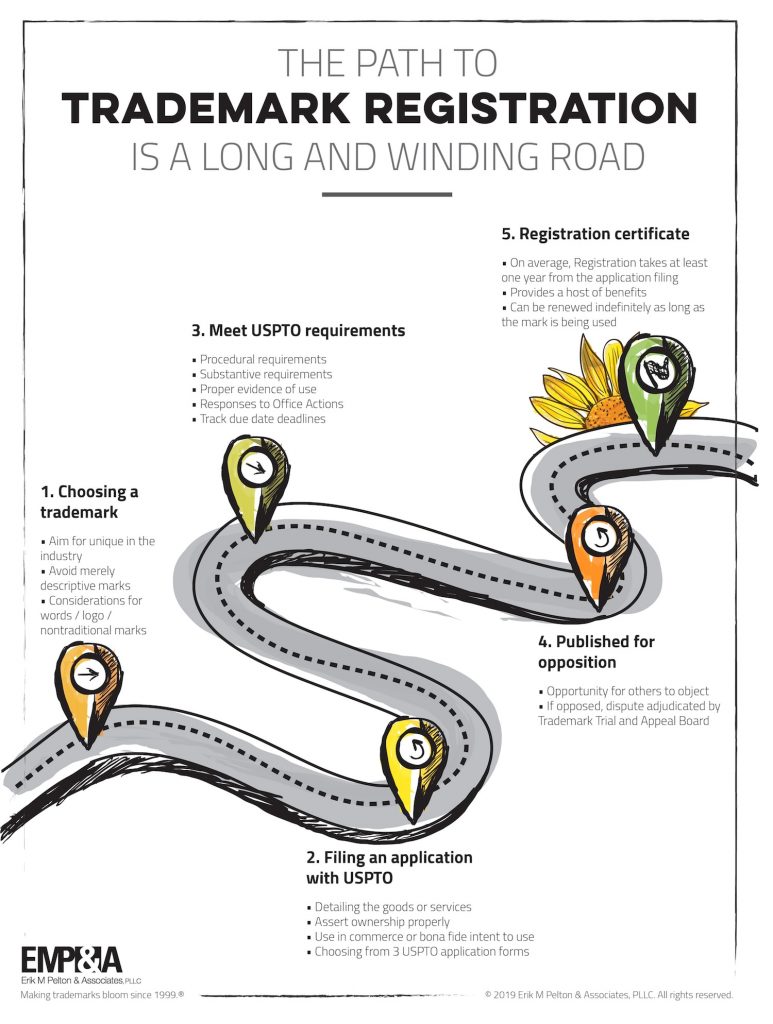Once an application for trademark registration is submitted to the USPTO, the trademark office takes 3 to 4 months after the filing before they begin the initial review. That’s for a variety of reasons, including the huge volume of applications that they receive every day and every year, and some timing issues regarding international filings, international databases, and other administrative reasons. And so after approximately four months, the application is assigned to an examining attorney at the USPTO and they review it for both procedural and substantive issues.
The substantive issues include things like a possible a likelihood of confusion or descriptiveness or a surname refusal; these are things that would affect the strength of the mark and whether or not the mark can actually be registered legally. The procedural issues are things that generally can be fixed like ensuring that the title of the person who signed it is provided, that the state of incorporation, if there’s a corporation, has been provided, that the description of goods and services and the classification of goods and services are proper and meet the government’s standards. Issues regarding the descriptions and classifications are probably the most common issues in office actions, even when they’re filed by attorneys.
When the examiner finds an issue with the application, they will generally issue an “office action” to the applicant or the applicant’s counsel. The applicant then gets six months to respond. Sometimes they are able to respond quickly. Sometimes there’s a reasons for waiting and delaying the response until near the end of the six month period.
It’s also possible that an application along the way it gets suspended or put on hold by the USPTO because of prior applications that could become an issue if they become registered and until those prior applications either become registered or become abandoned, the USPTO may avoid taking action on your application and suspend it.
When an application is approved either initially when it’s first reviewed or after correspondence and office actions, then it is published in the public records. That takes a period of several weeks. Then the publication period is actually a 30 day window when an outside party could potentially object or lodge an opposition to the application.
As you can see, all these steps add up to a long and winding road in the trademark registration process, and we’re not even done yet. If the application was filed based on an intent to use, before actual sales of the products or services, then the applicant still has to file a statement of use, which is a another step in the process and the evidence is reviewed by the trademark office and that takes time.
Finally, after all of this, hopefully the application is approved, it is published without objection, and then the applicant receives a trademark registration certificate. All of this together takes a minimum of six or seven months. It’s very, very rare that applications go through straightforward, even if filed by an attorney, and a registration is issued in six or seven months. Much more likely is an average, I tell my clients of about 12 to 14 months from start to finish. But it is the filing date that’s more important, not the finish date.
Believe it or not, I’ve had a registration one time for a client that took more than 10 years to receive. But we waited patiently. We overcame all of the obstacles. We had to wait for several of those pending applications to either fizzle out or resolve litigation disputes or become registered so that the trademark office could finally take a dispositive stance on our application. And more than 10 years after that application was filed, it became registered. And the client, of course, was not only very surprised to hear from me after many years, but very pleased to hear from me after many years.
So the road is long, the road is winding. And as you can imagine, it’s much easier to navigate if you have experienced counsel steering the car along that long and winding road to a trademark registration.





